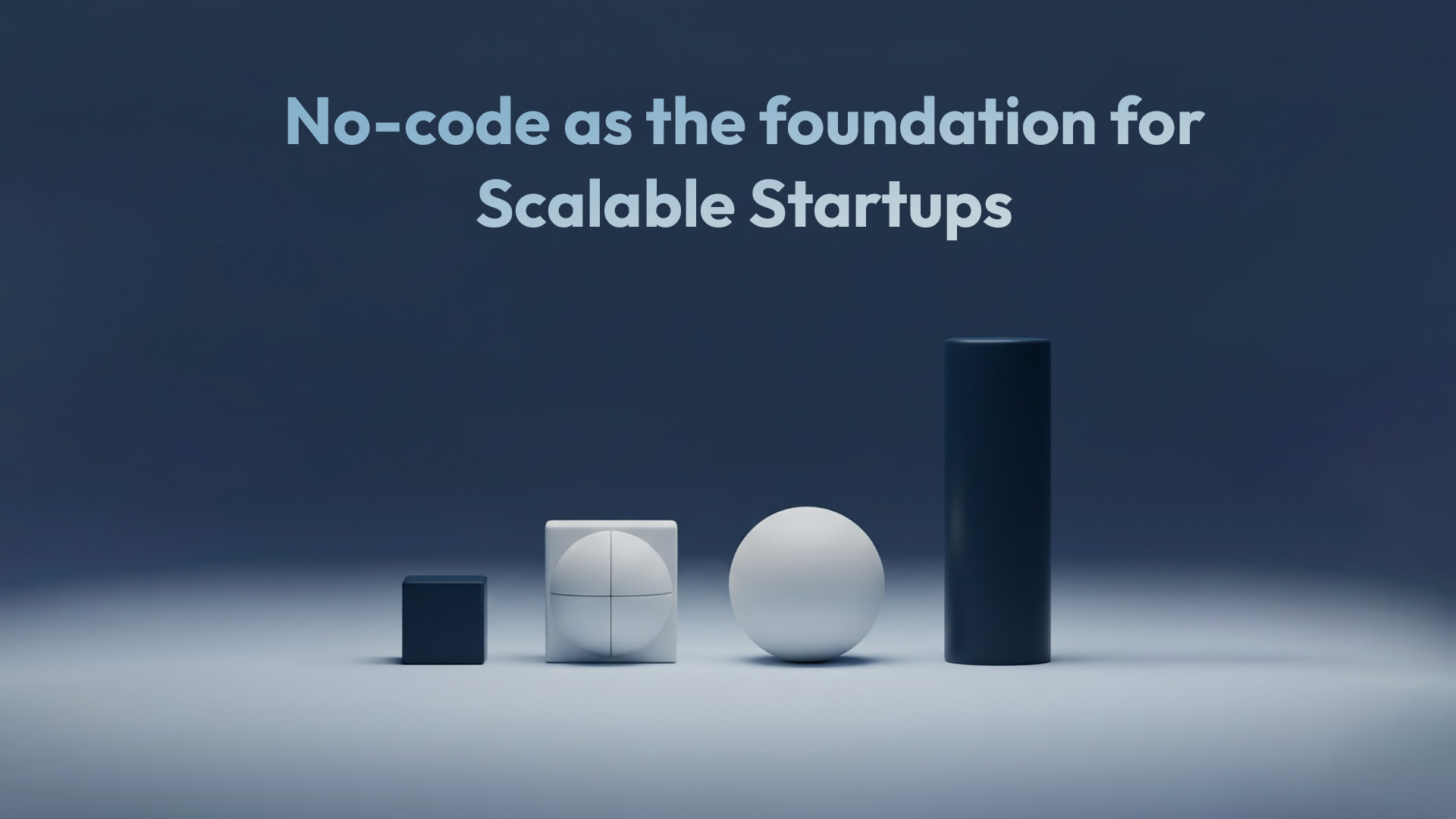The Right Time for Startups to Embrace No-Code Development

The Right Time for Startups to Embrace No-Code Development
Startups operate under constant pressure, limited time, resources, and funding make every decision critical. One of the earliest and most important decisions is how and when to build a product. No-code platforms have emerged as a strategic solution, allowing startups to develop digital products quickly, test assumptions, and gather real-world feedback without extensive technical expertise.
Why No-Code Matters
No-code platforms allow the creation of applications, websites, and other digital products without traditional coding. With drag-and-drop interfaces, templates, and visual logic, startups can build functional products rapidly.
Early-stage startups face uncertainty. Assumptions about the market, users, and product features are largely untested. Traditionally, validating an idea required hiring developers and spending months building a product. No-code changes this by enabling rapid development of a Minimum Viable Product (MVP), reducing risk and accelerating learning.
The Ideal Time to Start
The most effective moment to adopt no-code is during the earliest stages, after clearly defining the problem but before committing heavily to full-scale development. Early adoption allows startups to accelerate learning, reduce risk, and make informed decisions about product strategy. By leveraging no-code at this stage, teams can gain real-world insights without the overhead of traditional development.
Validate Ideas Quickly: Early-stage startups operate in a landscape of uncertainty. No-code enables teams to quickly turn concepts into functional prototypes or simplified versions of their product, allowing them to test assumptions and gather feedback from real users. This rapid validation helps avoid investing time and money into features or products that may not resonate with the market, giving founders confidence in their decisions before scaling further.
Save Time and Resources: Development costs are often one of the largest hurdles for startups. No-code platforms significantly reduce these costs by removing the need for large engineering teams during the initial build. Teams can launch functional products much faster than with traditional coding, freeing up resources to focus on other critical areas such as user research, marketing, or customer support. This efficiency accelerates the journey from concept to market without compromising quality.
Remain Flexible: One of the biggest advantages of no-code is the ability to pivot or iterate with minimal friction. As user feedback comes in, startups can adjust features, workflows, and designs quickly, responding to changing needs and insights. This flexibility ensures that the product evolves in line with user expectations and market realities, rather than being constrained by rigid code structures that are costly or time-consuming to modify.

Advantages for Early-Stage Startups
Rapid Prototyping: With no-code platforms, startups can move from idea to a functional product in a matter of weeks rather than months. This speed not only accelerates experimentation but also allows founders to showcase tangible progress to potential investors, partners, or early adopters without waiting for lengthy development cycles.
Lower Costs: Traditional product development often requires sizable engineering teams, which can quickly drain limited startup budgets. No-code reduces this dependency, enabling small teams to build and launch viable products with minimal financial overhead. This cost-efficiency allows resources to be directed toward growth areas like customer acquisition or market research.
Experimentation and Iteration: No-code makes it simple to test features, designs, and workflows directly with users. Instead of sinking large investments into a static build, startups can refine their product continuously, learning from feedback and making quick adjustments. This approach ensures that the product evolves in line with real user needs rather than assumptions.
Accessibility: Perhaps one of the most transformative aspects of no-code is how it opens product building to non-technical teams. Founders, designers, or business leads can directly create, test, and launch solutions without relying exclusively on developers. This accessibility fosters collaboration across the team and speeds up execution, as ideas move from concept to reality without unnecessary bottlenecks.
Considerations
While no-code is powerful, it comes with certain limitations that founders should be mindful of.
Platform Boundaries: Every no-code platform has its own strengths and weaknesses. There may be limits on functionality, integrations, or performance that affect how far a product can go within the platform. Understanding these constraints early helps avoid costly surprises later.
Scalability: No-code is best suited for MVPs and moderately complex applications. As user bases grow and products demand more sophisticated features or handle higher volumes, startups may need to transition to traditional development. Planning for this shift ensures growth doesn’t stall when the platform reaches its limits.
Technical Roadmap Alignment: Startups should align no-code adoption with their long-term vision. Some platforms restrict access to the underlying codebase or advanced customization, which can become limiting over time. Having a clear roadmap—including potential migration to custom development—ensures the product remains flexible and future-proof.
When No-Code May Not Be Enough
Complex Applications: No-code platforms are best suited for straightforward applications. Products that demand advanced algorithms, real-time data processing, or highly specialized integrations often push beyond what no-code tools can support. In such cases, traditional development becomes necessary to meet technical requirements.
High Scalability Needs: Startups aiming for large-scale adoption should plan carefully. While no-code can handle moderate growth, products anticipating millions of users or requiring deeply customized workflows may eventually need the performance and flexibility that only custom code can provide.
Long-Term Control: Some no-code platforms restrict access to the underlying codebase or place limits on customization. This can create challenges when startups want to implement unique features, optimize performance, or maintain full ownership of their technology. Preparing for a possible migration path early helps avoid being locked in later.

Best Practices
Start Small: Begin with the essentials, the single problem your product is solving and the features that directly support it. Avoid loading your first build with every idea on the table. A focused start ensures faster delivery and clearer insights into what actually matters to users.
Iterate Quickly: No-code thrives on agility. Use early feedback to make adjustments, refine workflows, or even pivot if necessary. The ability to adapt quickly keeps the product aligned with user needs and prevents wasted effort on features that don’t add value.
Plan for Growth: While no-code offers speed and simplicity, it’s wise to think ahead. Choose platforms that allow integrations, scaling, or smooth migration to custom development. Planning for growth ensures that today’s solution doesn’t become tomorrow’s limitation.
Define Metrics: Every iteration should be guided by measurable outcomes. Whether it’s user engagement, retention, or conversion, clear metrics help teams focus their energy where it counts. Tracking progress with data-driven goals ensures that each version of the product gets closer to product-market fit.
Conclusion
The optimal time for startups to embrace no-code is early, during idea validation and MVP development. No-code accelerates product development, reduces costs, and provides flexibility for iteration. While not a replacement for technical expertise, it enables startups to validate ideas quickly, learn efficiently, and lay a foundation for future growth.
Used strategically, no-code is more than a shortcut, it’s a practical, powerful tool for startups to move from concept to product-market fit faster, testing and iterating along the way while preparing for long-term scalability.
